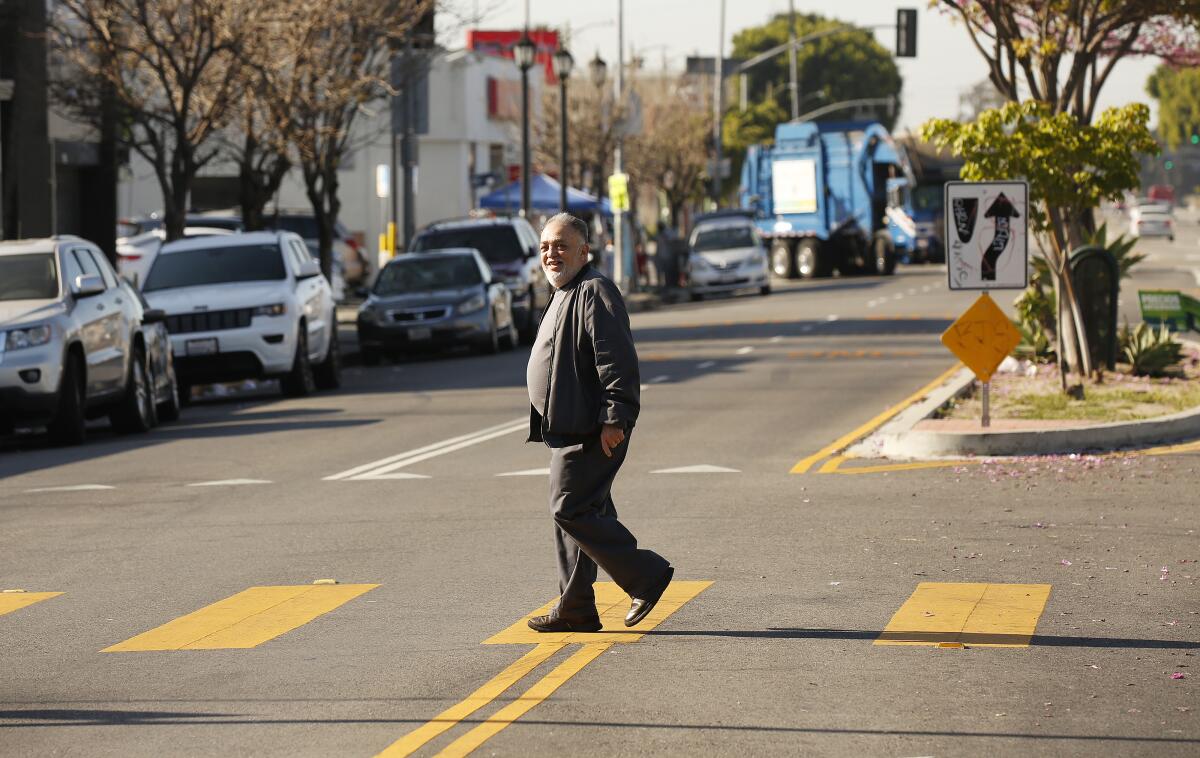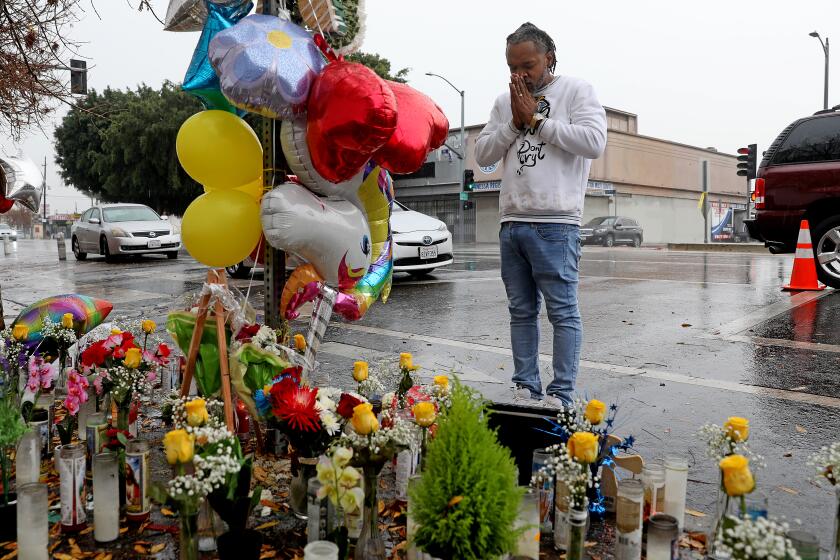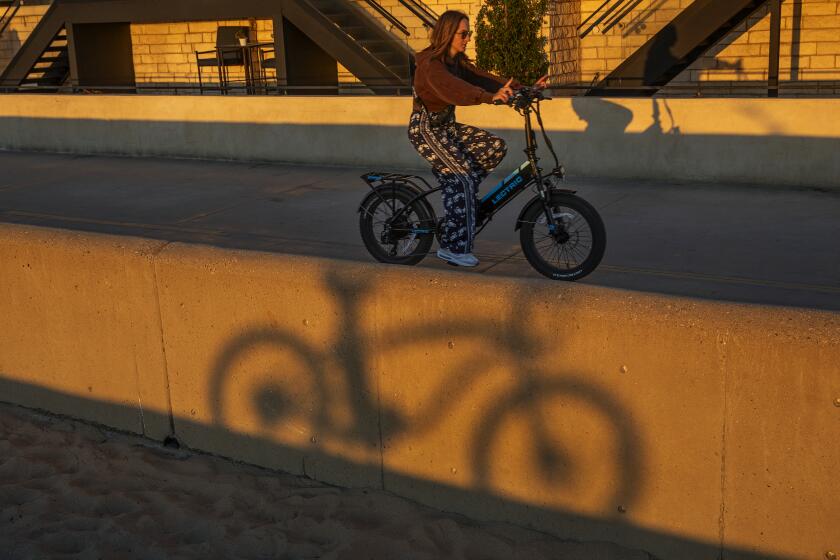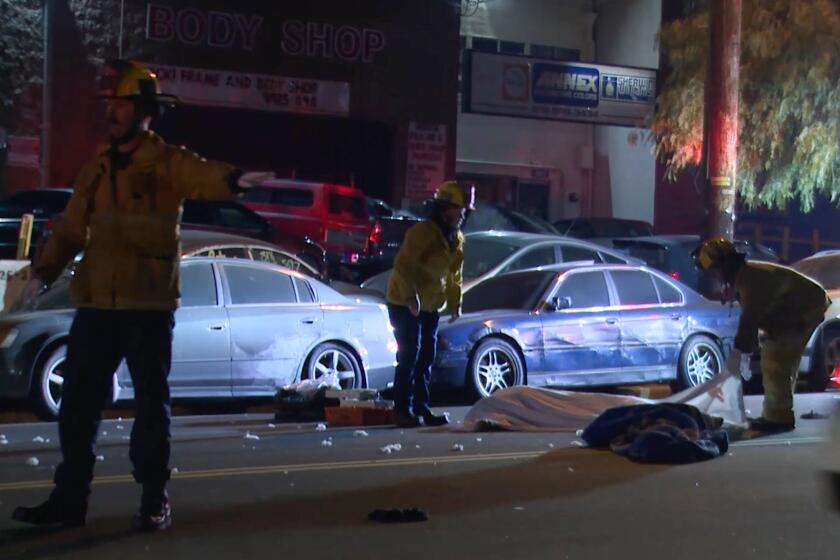Editorial: Fear-mongering on Measure HLA ignores what’s really scary — L.A.’s deadly streets

The sharp increase in the number of Angelenos killed or seriously injured in traffic collisions should be troubling to anyone who travels the city’s streets. Last year 336 people were killed in vehicle crashes, more than in any of the last 20 years. There were more traffic fatalities than homicides.
Yet instead of working to help solve this crisis, some of the city’s most powerful interests are trying to sabotage efforts to make the streets safer for pedestrians, bicyclists and, yes, even drivers. The target is Measure HLA on the March 5 ballot, which would require that the city follow its own mobility plan and build the street safety, bike, bus and pedestrian improvements laid out nearly a decade ago by the City Council and then-Mayor Eric Garcetti.
The ballot measure would force L.A.’s leaders to enact their own visionary Mobility Plan, which aims to make the city’s car-dominated streets safer for pedestrians, bicyclists and transit users.
But even though the projects have been on the books for years, last week the city’s top budget official released a questionable new $3.1-billion estimate for the plan, while the union that represents city firefighters claimed that making the streets safer will slow emergency response times.
It’s fear-mongering designed to scare Angelenos into voting against the measure. But what’s really frightening is that L.A. leaders could have started building a more walkable, bikeable, transit-friendly sustainable city years ago and perhaps averted some of the recent deaths. They had the blueprint to make streets safer but didn’t make it a priority. That’s why Measure HLA is necessary.
To understand how unnerving it is out there for cyclists, I might suggest you saddle up and pedal in a gutter bike lane during rush hour. But I could never recommend doing that.
It’s worth looking closer at arguments from the United Firefighters of Los Angeles, which is bankrolling an opposition campaign against Measure HLA. The union’s leaders said that projects such as bike and bus lanes, which sometimes require removing a lane for cars, could make it harder for firetrucks to navigate through traffic to fire or medical calls.
It’s possible, which is why the Mobility Plan requires that the fire department review individual proposed changes to traffic lanes. But the plan’s environmental impact report found that street redesigns would actually help emergency response by adding center left turn lanes and bus lanes, which would allow ambulances and firetrucks to whiz by car traffic.
And if the Mobility Plan isn’t implemented and people don’t have safe, convenient options for walking, biking and taking transit, L.A.’s traffic congestion will only get worse. That would make it even harder for emergency responders to travel through the city.
More people are dying in L.A. traffic because driver recklessness has gone off the charts. A better solution than redesigning roads is to enforce traffic laws.
Measure HLA is a fairly modest proposal. It doesn’t set a deadline for projects, and only requires that the city add the bike lanes, bus lanes or other traffic fixes outlined in the Mobility Plan when more than one-eighth of a mile of street gets repaved.
Backers of Measure HLA, including business groups such as BizFed and the Valley Industry and Commerce Assn., say it’s a smarter use of taxpayer money. When city crews have to repaint the lines when repaving a street, it saves time and funds to also restripe the roads according to the Mobility Plan.
That’s why the latest $3.1-billion cost projection from City Administrative Officer Matt Szabo seems vastly inflated. His report suggested it would cost $1.76 million per mile to add a bike lane on a street. That’s nine times more than what the city is currently spending per mile for bike lanes, according to StreetsblogLA.
Councilmember Bob Blumenfield, chair of the City Council’s budget committee, was skeptical of the projection and noted several flawed assumptions, including imposing an artificial 10-year deadline on the projects and having to replace every inch of sidewalk when enhancing streets for pedestrians.
Nowhere in the CAO’s report was an assessment of the price tag for failing to enact the Mobility Plan. The economic cost of traffic deaths in Los Angeles in 2023 alone was $3.9 billion, when considering the value assigned to human life. Plus, the city often faces legal liability for failing to address unsafe street conditions with urgency.
How many more people will needlessly die simply trying to cross the street or riding a bike if L.A.’s Mobility Plan languishes for another decade?
Los Angeles can have safer streets. Passing Measure HLA is the way we get them.
More to Read
A cure for the common opinion
Get thought-provoking perspectives with our weekly newsletter.
You may occasionally receive promotional content from the Los Angeles Times.













